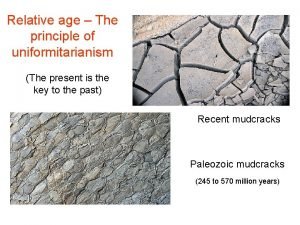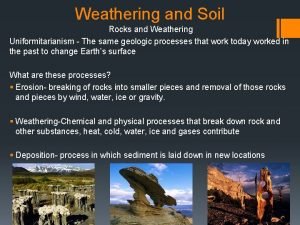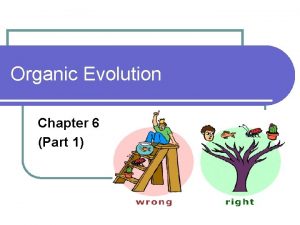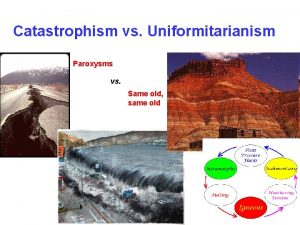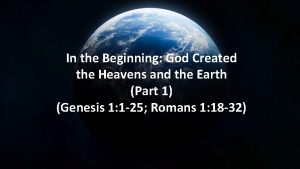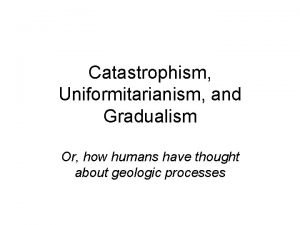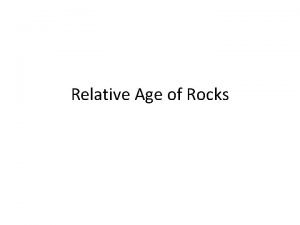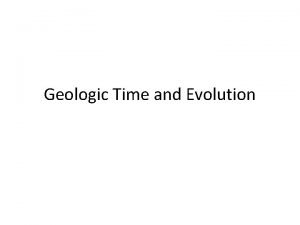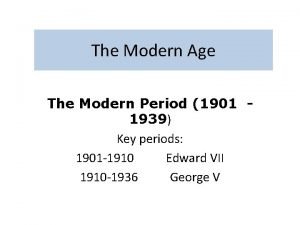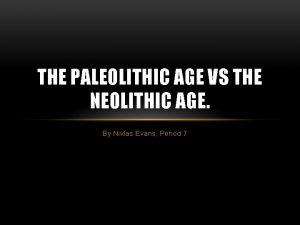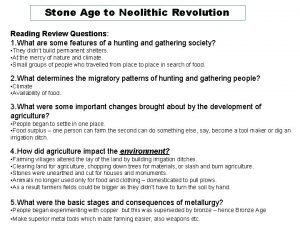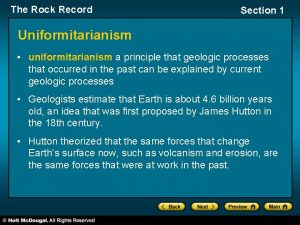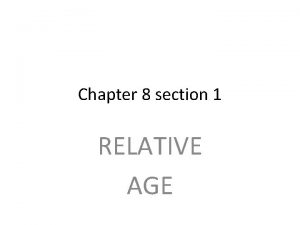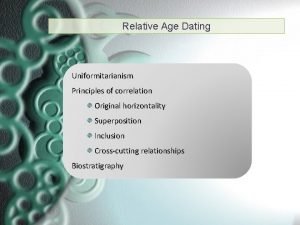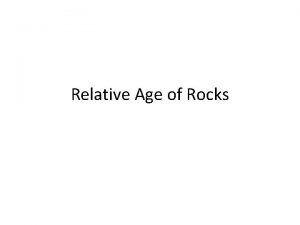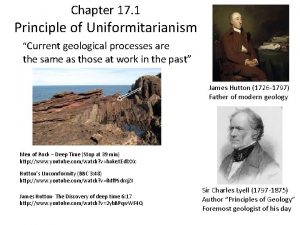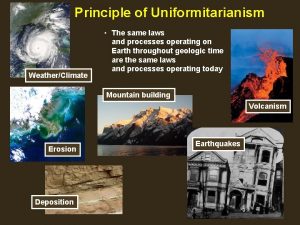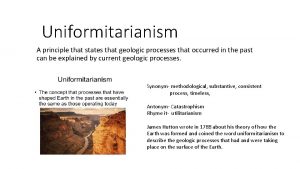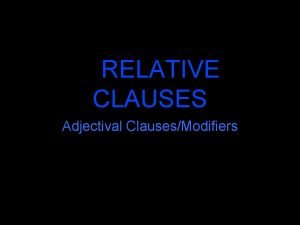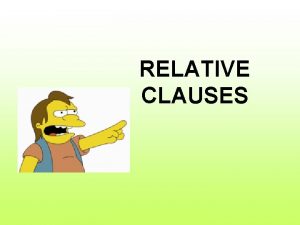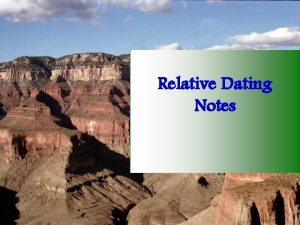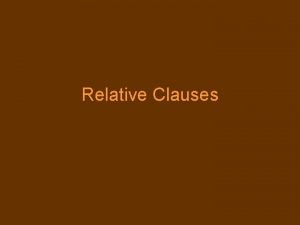Relative age The principle of uniformitarianism The present























- Slides: 23

Relative age – The principle of uniformitarianism (The present is the key to the past) Recent mudcracks Paleozoic mudcracks (245 to 570 million years)

Relative age – The principle of superposition

Relative age – The principle of original horizontality

Relative Age – The Principle of Original Continuity

Relative age – Crosscutting relationships

Relative age – Cross-cutting relationships

Relative age and the fossil record Bryozoan Crinoid Brachiopod

Relative age – index fossils fossil assemblages, and global correlation

Unconformities and gaps in time Angular unconformity Non-conformity

Angular Unconformity Sandstone 375 Ma Limestone 450 Ma

Disconformity

Developing a Geological Map

Stratigraphic succession at the Grand Canyon

Grand Canyon Stratigraphy

Stratigraphic correlation

Stratigraphic Correlation Cross-section 1 Cross-section 2 Cross-section 3

Cross-section 1 Cross-section 2 Cross-section 3

Global Stratigraphic Correlation The role of fossil assemblages

Radioactive Isotope Decay Alpha decay Beta - minus decay

Radiometric Age Dating Parent Daughter Half-life Radioactive decay 206 Pb 4. 47 x 109 yr N =Noe -lt (N = number of parent 238 U Half-life ½ = e-lt/2 atoms at time t; No = initial number of parent atoms; l = rate constant or proportion of atoms destroyed per year) 235 U 207 Pb 704 x 106 yr 40 K 40 Ar 1. 25 x 109 yr 14 C 14 N 5, 730 yr

Radiocarbon (14 C) Dating Neutrons produced from cosmic radiation undergo nuclear reactions with nitrogen in the atmosphere to produce carbon 14. 14 14 n + 7 N C + p 6 Plants take up carbon 14 by absorbing CO 2 After death the proportion of carbon 14 slowly decreases due to beta-minus decay _ 14 C 6 β 14 7 _ _ N+v+e

Geological Time Scale Proliferation of shelly fossils

Geological Time
 Conformity
Conformity Hutton's principle of uniformitarianism
Hutton's principle of uniformitarianism Iron age dates
Iron age dates Iron age bronze age stone age timeline
Iron age bronze age stone age timeline How does temperature break down rocks
How does temperature break down rocks Uniformitarianism examples
Uniformitarianism examples Whats uniformitarianism
Whats uniformitarianism Catastrophism vs. uniformitarianism
Catastrophism vs. uniformitarianism Uniformitarianism drawing
Uniformitarianism drawing Uniformitarianism
Uniformitarianism Gradualism vs uniformitarianism
Gradualism vs uniformitarianism Relative clauses and relative pronouns stage 15
Relative clauses and relative pronouns stage 15 Conditional frequency
Conditional frequency Relative clauses jeopardy
Relative clauses jeopardy Relative adverbs list
Relative adverbs list Relative age effect
Relative age effect Relative age of rocks diagram
Relative age of rocks diagram Relative age dating
Relative age dating Relative age
Relative age Relative dating
Relative dating Premature adrenarche
Premature adrenarche Victorian age and modern age
Victorian age and modern age Paleolithic vs neolithic
Paleolithic vs neolithic Neolithic period timeline
Neolithic period timeline
